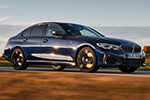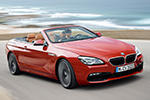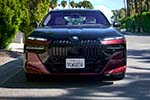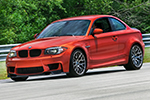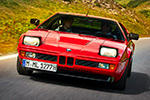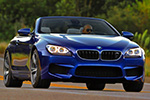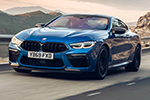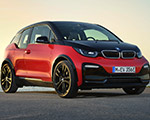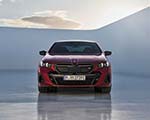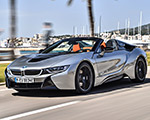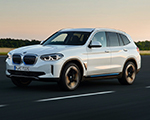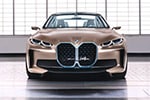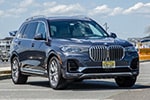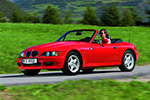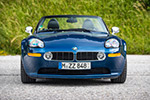The BMW iX3 may look like just another SUV in the lineup, but make no mistake—this is a turning point in BMW’s history. More than an electric SUV, it represents a strategic reset for the brand, signaling how the next decade of driving will look, feel, and connect us. It is, after all, the largest investment BMW has ever made, at over €10 billion. Here are the five biggest reasons why the iX3 will change BMW forever.
1. The First Neue Klasse SUV
The iX3 is the first production SUV built on BMW’s Neue Klasse platform—a clean-sheet architecture designed exclusively for electrification. While its launch ahead of the i3 sedan might seem like a statement about SUVs taking priority, the reality has more to do with timing. BMW’s Debrecen plant, where the iX3 is built, was designed from the ground up for Neue Klasse, while the Munich plant—home of the i3—needed a complete rebuild while still producing the current 3 Series.
That said, the iX3 is setting the tone for what’s to come. Its driving experience, tested at BMW’s Miramas proving grounds, is so capable and well-rounded that it only raises expectations for the i3 sedan. If the SUV is this sharp, agile, and refined, just imagine what the sedan will deliver.
2. A New Design Language for a New Era
BMW’s design boss Oliver Heilmer calls the Neue Klasse philosophy “clear, bold, and emotional.” The iX3 proudly introduces this new DNA with slimmer kidney grilles, sharper, yet simpler proportions, and futuristic light signatures. Inside, the Panoramic display stretches across the windshield with a new way of presenting information to the driver, while sustainable materials and improved seating redefine the interior of future BMWs.
But this isn’t just an EV design language—it will influence combustion-powered BMWs as well. Expect it to remain the brand’s visual backbone through 2030 and beyond, adaptable across every body style. A key reason is BMW’s new phygital design approach, which blends physical and digital design features on the outside while allowing the interior to evolve. iDrive X and the Panoramic Display are just the beginning; like iDrive before them, these elements will continue to grow and redefine the BMW cockpit for years to come.
3. The Heart of Joy Computer Platform
Underneath the sheet metal, the iX3 introduces BMW’s most advanced computing architecture yet. Called the “Heart of Joy,” this central control unit unites powertrain, chassis, and digital functions for the first time.
Mihiar Ayoubi, Senior Vice President of Driving Experience, explained its three-dimensional scalability:
- First, it lets BMW tailor the character of each car in the Neue Klasse cluster. One car can feel “naughty,” another “reasonable,” another “safe.”
- Second, it allows multiple personalities within a single car, adapting dynamically to modes chosen by the driver.
- Third, it can expand as more subsystems are added, integrating them into a central intelligence to benefit customers.
In short, the Heart of Joy doesn’t just redefine EV driving dynamics—it also promises safer driving, better efficiency, and an overall more comfortable experience. It’s a system that grows with the car, the customer, and the technology around it.
4. Bidirectional Charging at Scale
BMW and E.ON are using the iX3 to launch Germany’s first commercial Vehicle-to-Grid program. For the first time, owners can feed energy back into the grid and potentially earn money while stabilizing renewable power networks. This turns the iX3 also into a mobile energy storage unit. Beyond stabilizing the grid and earning money, bidirectional charging can also cut household energy costs by letting owners power their homes during peak hours, provide backup power during outages, and make renewable sources like solar panels far more efficient by storing excess energy in the car’s battery.
5. Unlocking the Future of Driving Dynamics
Perhaps the most exciting change is what the new BMW iX3 enables beneath the surface. Thanks to its modular electric platform, BMW can configure the SUV with a single rear motor, dual motors front and rear, a tri-motor layout with two at the rear and one at the front, or even a quad-motor system. Even though BMW has so far only showed us the dual-motor setup, we can explore on our own what each setup could offer in terms of distinct advantages:
- Single motor: Simpler, more affordable, and often more playful thanks to rear-wheel drive balance.
- Dual motor: Adds all-wheel drive, greater power, and improved traction in all conditions.
- Tri-motor: Unlocks sharper handling and more precise power distribution than dual-motor layouts.
- Quad motor: The Ultimate Driving Experience—precise torque-vectoring, independent wheel control, extremely tight turning ability, and ferocious acceleration. The first M3 EV will likely demonstrate that.
This flexibility allows BMW to differentiate the driving experience of its vehicles like never before. A customer could choose a calm, comfort-focused setup or unleash near-race-car agility—all adjustable through software. It broadens the spectrum of what “Ultimate Driving Machine” can mean in the electric age, while giving BMW a toolkit to rival anything else on the market.
Why Should We Be Excited About Neue Klasse?
Because it marks a genuine reset for BMW, not just a new model line. The iX3 Neue Klasse shows how far the company is willing to go to rethink design, driving dynamics, and the way its cars interact with the world around them. It’s also proof that BMW isn’t afraid to experiment, whether that’s through bold styling (even if many people still complain about BMW’s design direction), scalable motor setups, or turning cars into part of the energy ecosystem.
Neue Klasse is important because it doesn’t abandon BMW’s identity — it brings into the future. If the iX3 is this capable as the opening act, then what follows, from the i3 sedan to future M cars, could redefine how we think about the “Ultimate Driving Machine” in an electric age. Next episode? Sometimes in Spring 2026.










































